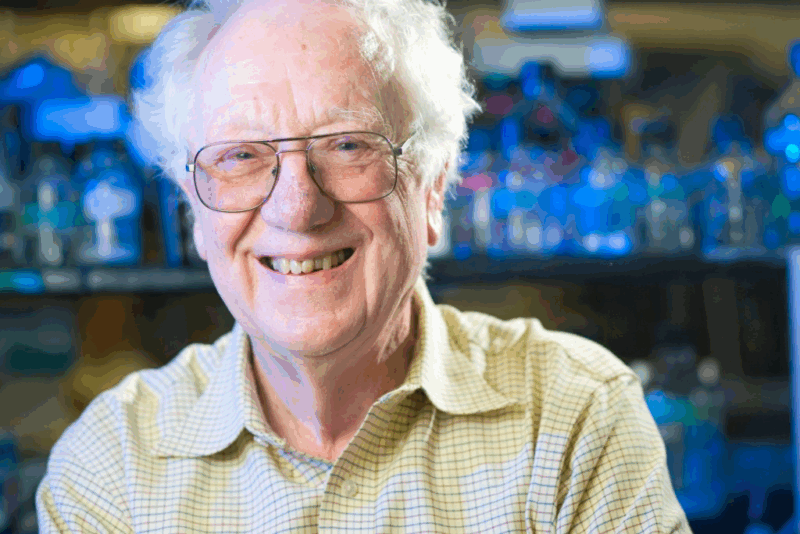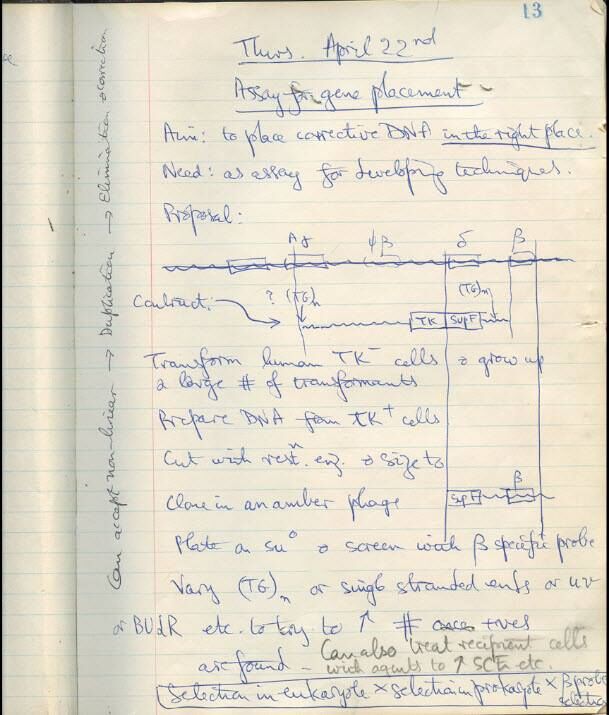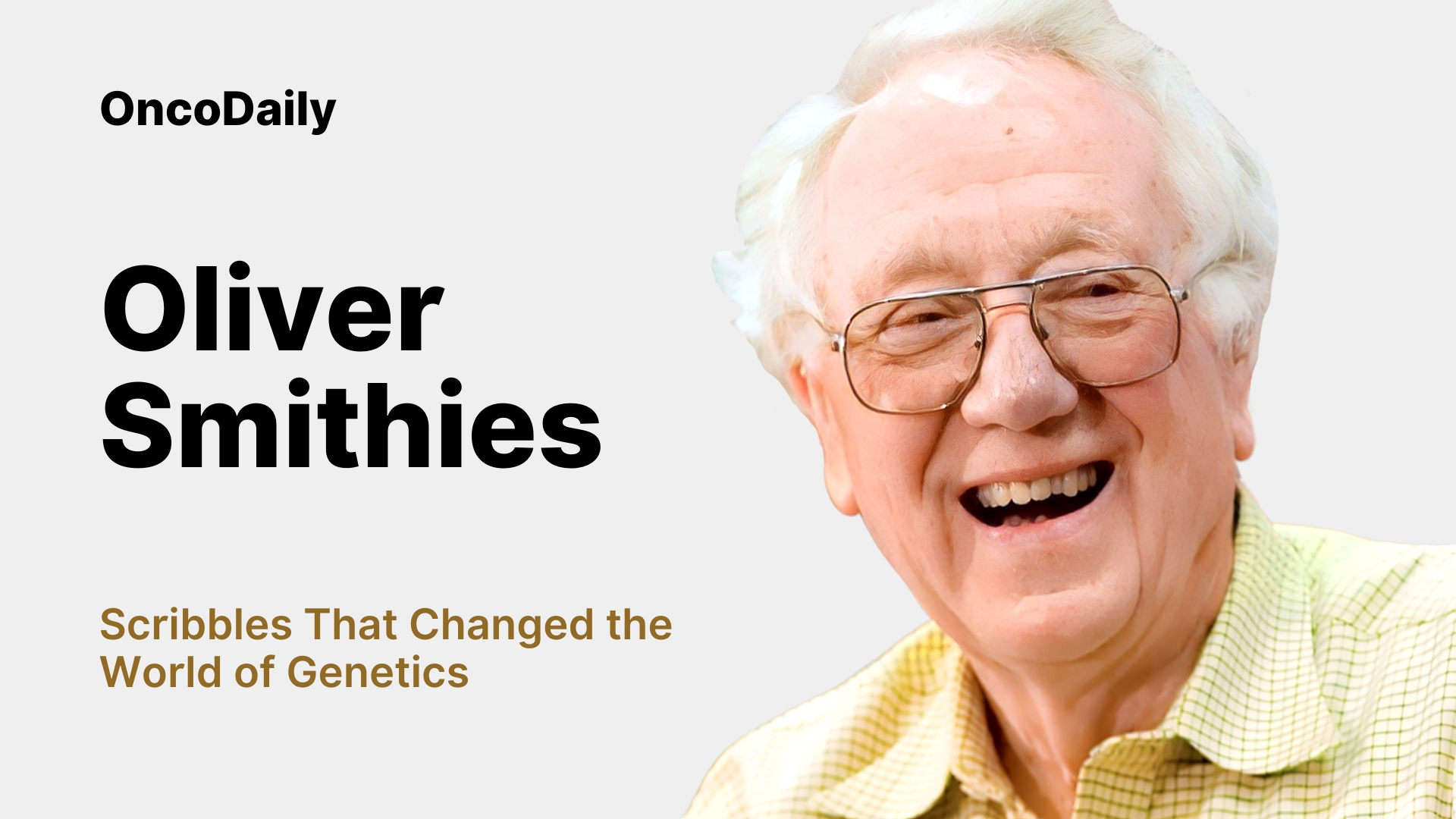On April 22, 1982, Oliver Smithies sat down with his lab notebook—his “γ notebook,” to be exact—and jotted down a few lines under the heading: “Assay for gene placement.” At the time, it may have seemed like just another idea, another page in the life of a curious scientist. But that simple note was the spark that helped ignite a revolution in genetics.
Today, we call it gene targeting—a technology so powerful, it’s reshaped the way scientists study disease, genetics, and development. It eventually won Smithies a Nobel Prize in Physiology or Medicine in 2007, shared with Mario Capecchi and Martin Evans, for a discovery that started as nothing more than a handwritten thought.
From a notebook entry to Nobel Prize-winning science, the story of a quiet revolutionary

Source: rciscience.ca
A Gentle Mind with a Bold Vision
Smithies wasn’t one for drama or fanfare. Born in Yorkshire, England, he brought a soft-spoken brilliance to the world of science. He wasn’t in it for awards or recognition—he simply loved the process of discovery. One of his favorite tools? A fountain pen and a notebook.
His colleagues often described him as humble, persistent, and endlessly curious.
Dr. J. Charles Jennette, the Kenneth M. Brinkhous Distinguished Professor and Chair of the Department of Pathology and Laboratory Medicine at the University of North Carolina at Chapel Hill, once said:
“Oliver was a truly remarkable person with a joy for life and science. His brilliance was paired with infectious enthusiasm that inspired everyone around him.”
That joy translated into groundbreaking work, including:
- Starch gel electrophoresis, a new way to separate proteins
- The first gene-targeted mice, used to study diseases like cystic fibrosis and high blood pressure
- Major contributions to cardiovascular genetics
A Nobel Moment Decades in the Making
The true power of Smithies’ 1982 notebook idea came to life in the following years. By manipulating genes in embryonic stem cells and implanting them into mice, he and his collaborators opened the door to what’s now a fundamental tool in biomedical science: “knockout mice.” Read the article on PubMed.
These mice allowed researchers to “turn off” specific genes and observe what happens—making it possible to study the function of almost any gene in the body. The technique has been applied to research on everything from cancer and Alzheimer’s to diabetes and immune disorders.
In 2007, Smithies, alongside Mario Capecchi and Martin Evans, received the Nobel Prize for their work on gene targeting using embryonic stem cells. Their discoveries have had profound implications across various biomedical fields.
The Beauty of a Notebook
Smithies’ handwritten notes are now part of the archive at the University of North Carolina at Chapel Hill, where he worked for decades. To open one of his notebooks is to see the mind of a scientist at work—cross-outs, question marks, arrows, and all.
Smithies viewed science not just as a profession but as a way of life. He once reflected on the influence of his mentor, Dr. A. G. Ogston:
“Science is more than the search for truth, more than a challenging game, more than a profession. It is a life that a diversity of people lead together, in the closest proximity, a school for social living. We are members one of another.”
Source: nobelprize.org
On April 22, The Nobel Prize’s official LinkedIn page paid tribute by sharing an image of that very notebook page, adding:
“Take a look at Oliver Smithies’ notebook from 1982 on gene targeting.
“On April 22nd, 1982, on page 13 of my γ notebook, I summarized my idea under the heading ‘Assay for gene placement’ (now called ‘gene targeting’)”
Oliver Smithies shared the 2007 medicine prize for research on principles for introducing specific gene modifications by the use of embryonic stem cells. The discoveries made by him and his co-laureates led to the creation of an immensely powerful technology referred to as gene targeting in mice. It is now applied to virtually all areas of biomedicine.”

Image source: The University of North Carolina at Chapel Hill
A Legacy Beyond the Lab
Oliver Smithies passed away in 2017, but his legacy lives on in the labs, clinics, and classrooms of the world. His work taught us not only how to modify genes, but how to approach science with patience, imagination, and joy.
He showed us that sometimes, history isn’t made in grand moments—but in the quiet scribbles of a thoughtful scientist, in a lab somewhere, on page 13 of a notebook.
Explore More
Want to read more stories like this? Join the conversation—follow OncoDaily.
Written by Md Foorquan Hashmi, MD, Sr. Editor, OncoDaily: India Bureau

